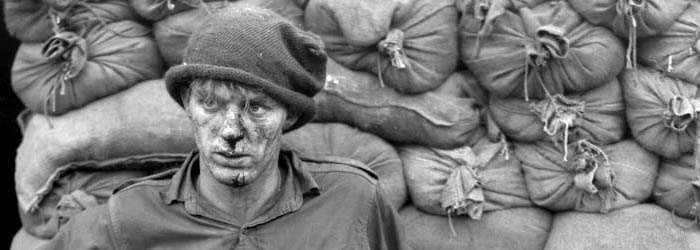Topic: Leadership

Leadership and Tactics (1954)
The section and platoon are the teams upon which, in war, the successful handling of the battalion rests.
Canadian Army, Manual of Training; Infantry Section Leading and Platoon Tactics, 1954
Leadership
1. A leader must first of all have the confidence of his men, and to gain this he must have confidence in himself. To have justified confidence in himself he must know his job. He must be able to make up his mind, and having done so, stick to his decision. He should keep calm. To show doubt and indecision is a sure way of shaking the confidence of his men. A stout-hearted man will always go on trying; and by doing so he will instil his own fighting spirit into his followers.
2. Loyalty is an essential of leadership; unless a leader is himself loyal to his superiors, he cannot expect loyal support from his subordinates.
3. Finally, he must understand discipline. He must command the men of his section firmly, but with common sense and fairness. He must give his orders clearly and, having given an order, must insist on it being efficiently carried out.
Tactics
1. The section and platoon are the teams upon which, in war, the successful handling of the battalion rests. Once committed to battle, success or failure will depend largely on the initiative of junior leaders and the efficient tactical handling of their sub-units.
Minor tactics is the application of weapons and formations to the ground. Every platoon and section commander must reach a high standard in the following:—
(a) Weapon handling.
(b) Fieldcraft and appreciation of ground.
(c) Selection and construction of fire positions.
(d) Concealment and the use and construction of cover.
2. In war, platoon and section commander have power over the lives of their men. Junior leaders must make every effort to improve their military knowledge in all its aspects, and putting that knowledge into practice, justify themselves as leaders in action.
3. Tactics are essentially common sense and officers and NCOs should regard them as such. There are certain factors which are constant. These are:—
(a) The aim. The junior leader must always have a clear picture in his mind of the aim of the commander. From this he must decide on his own immediate aim and make his plan with that aim constantly in mind.
(b) Surprise. The element of surprise must never be forgotten. Junior leaders should place themselves in the enemy's position and then avoid the obvious course which the enemy would be most likely to expect. Deceiving the enemy, concealment, and speed of action all go towards achieving surprise.
(c) Simplicity of Plan. A simple, straightforward plan, executed with speed and determination, will always be better than a complicated one. The latter will take longer to prepare and details my be forgotten in the heat of battle.

